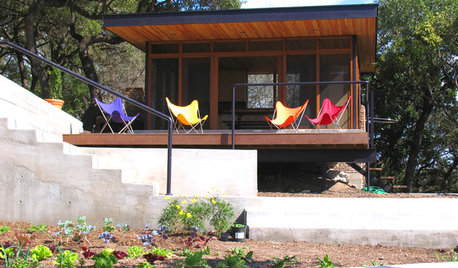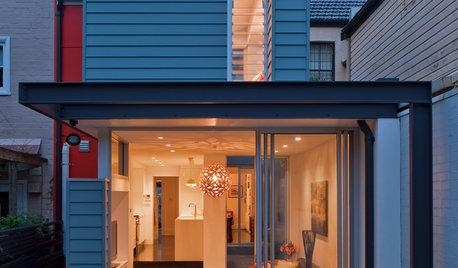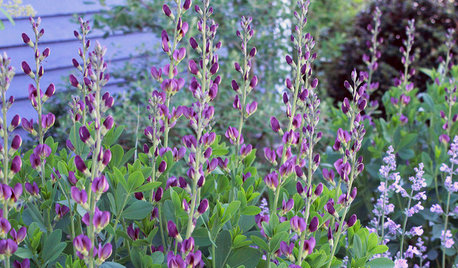Butterfly Museums/Houses
sandwhy
17 years ago
Related Stories

FURNITUREModern Icons: The Butterfly Chair
Add Curves and Color Indoors and Out With the 1940s-Style Butterfly Chair
Full Story
FURNITUREModern Icons: Sori Yanagi's Butterfly Stool
Rooms take flight with the organic beauty of this sculptural midcentury modern seat
Full Story
MIDCENTURY HOMESMy Houzz: A ‘Whimsical Museum Gallery’ in Texas
Era-spanning collections with healthy doses of humor keep the look lively in a 1940s rambler
Full Story
ARTShow News: Rare Quilts Get Museum Time
See 6 intricate designs from a California exhibition and get tips for building your own quilt collection
Full Story
HOUZZ TOURSHouzz Tour: Butterfly Roofs Top a Sydney Terrace House
Modern remodel retains 19th century facade while pouring natural light into new and old spaces
Full Story
GARDENING GUIDES6 Plants That Beat Butterfly Bush for the Wildlife Draw
It's invasive, a nonnative and a poor insect magnet. Check out these better alternatives to butterfly bush in the garden
Full Story
GARDENING GUIDES20 Favorite Flowers for Butterflies and Bouquets
Discover perennials and annuals that do double duty as butterfly magnets and versatile cut flowers
Full Story
GARDENING FOR BUTTERFLIES7 Native Wildflowers to Make You an Awesome Butterfly Host
Offer the leaves of these and you’ll get more butterflies than with flower nectar alone
Full Story
GARDENING FOR BUTTERFLIESBe a Butterfly Savior — Garden for the Monarchs
Keep hope, beauty and kindness alive in the landscape by providing a refuge for these threatened enchanters
Full Story
CALIFORNIA NATIVE PLANTSGreat Design Plant: Asclepias Is Attractive to Monarch Butterflies
Increase monarch butterfly populations in California by planting stunning native milkweeds
Full StoryMore Discussions




butterfly_pixie
emmayct
Related Discussions
any opinions on commercially available butterfly houses?
Q
Volunteer your green-thumb at the Museum of Science!
Q
Sertoma Butterfly House
Q
Butterflies in my house - what should I do?
Q
bttfly9
sandwhyOriginal Author
susanlynne48
christie_sw_mo
butterfly_pixie
susanlynne48
christie_sw_mo
rjj1
texaspuddyprint
sandwhyOriginal Author
rjj1
susanlynne48
sandwhyOriginal Author
bttfly9
bttfly9
susanlynne48
sandwhyOriginal Author
rhizo_1 (North AL) zone 7
docmom_gw
susanlynne48
sandwhyOriginal Author
emmayct
mboston_gw
mboston_gw
docmom_gw